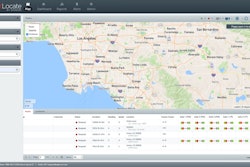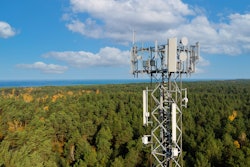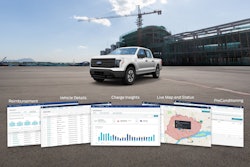With no end in sight to the supply chain issues kicked off by the COVID-19 pandemic, it is more critical than ever for fleets to not only maintain but also increase uptime on each truck in their inventory.
To do that, more and more fleets are integrating artificial intelligence (AI) and machine learning (ML) products into their systems to predict maintenance failures far enough in advance to keep their trucks from landing in the shop for an extended period.
But using AI in predictive maintenance isn’t just a matter of increasing uptime and saving money on repairs. Sandeep Kar, chief strategy officer at Noregon Systems, said it’s also about competitive edge, and if fleets fail to join this technological revolution early, the accuracy and benefits will not be as profound.
“We all know downtime is the biggest enemy of fleet managers. Anything that can help reduce downtime is a value-added solution,” Kar said. “Reducing downtime not only helps freight managers save money by avoiding costly (repairs) but also make money because this feature can now be used to differentiate your business value proposition versus the competitor. You can say, ‘by harnessing the power of ML and AI and predictive maintenance, etc., our trucks offer (more) uptime.’ If you're a shipper, you want to engage the truck fleet that guarantees on-time delivery so you can offer that to your customers.”
Most fleets use an interval-based approach to maintenance based on time or mileage, leaving them vulnerable to malfunctions and reactive repairs. Willie Reeves, director of maintenance at PacLease, said AI and ML allows service managers to be proactive instead of reactive.
“Predictive maintenance gives location service managers the proactive approach … to be able to get the trucks diagnosed and in and out of the shop a lot faster than our non-predictive maintenance approach,” Reeves said. “It maximizes uptime. For example oftentimes a check engine light can come on for the coolant being low or high when a driver is going up or down a hill. With our onboard systems, a repair location can gain a better view of the issue In situations like that instead of slowing the driver up and preventing them from continuing their routes.”
Telematics technology company Fleet Complete and predictive analytics platform Pitstop recently completed an advanced AI-powered platform for predictive maintenance of engines, brakes and tires geared toward commercial fleet operations that is expected to increase vehicle uptime by up to 25% and save up to $2,000 per vehicle per year by preventing costly repairs, reducing downtime, increasing safety and maximizing vehicle lifetimes.
"We are experiencing the biggest change in the transportation industry in the past 100 years. Vehicle electrification, connected vehicles, same-day delivery logistics and shared mobility are changing the way people access goods and services,” said Shiva Bhardwaj, CEO and founder of Pitstop. “It is inevitable for AI to be used to optimize fleet efficiency, which is what we have accomplished here with Fleet Complete. This innovation of deploying prognostics to any vehicle type across all major components is an incredible technical feat. It will be core to the future of mobility – the way we move people and goods."
While the market is not saturated with AI and ML as it is still relatively new in predictive maintenance, Kar said prescription is the way of the future – not predictive.
“The future is not predictive. The future will be prescriptive,” Kar said. “AI and other technologies will work in tandem to prescribe certain outcomes for businesses that employ it, and that is the bold, brave new future that is getting created.”
He said it is being created through bumper-to-bumper sensors from the front of the truck to the tail of the trailer, providing large volumes of data that are aggregated to determine potential system failures.
“Based on these kinds of data modeling, you can now have AI models that predict that in the future if you were to take this truck from point A to point B, at this time of day, at this time of the year, carrying this amount of load, there’s a higher propensity for engine failure or transmission failure.” Kar said. “That is the kind of solution that AI is creating, and that is how the business model is getting transformed from information being descriptive to predictive, eventually prescriptive.”
But Reeves said there is still room for growth of AI in predictive maintenance because of the various makes and models of trucks and the various data that can be captured.
Kar said different companies have focused on AI and ML in different areas, specializing in predictive maintenance for the engine, or the battery, or the transmission, and no single company can claim they have all system components covered. He said this could lead to consolidation of companies as they look to offer an end-to-end solution.
While predictive maintenance is beneficial, there are some cons. Reeves said it takes time for technicians to learn and adjust and for the world to adapt and incorporate new tools. Kar said that is why it’s important for fleets to hop on the train early or get left behind.
The good news, he said, is AI levels the playing field for younger or smaller fleets because while larger fleets can afford a battery of engineers and access to data, smaller fleets can easier afford AI and ML, making them more competitive.
“Now more companies have an equal, if not better, chance of harnessing data and differentiating themselves by offering mission-critical solutions that are enabled by AI technology,” Kar said. “AI … (offers) the same tools, the same benefits, that historically larger fleets have harnessed, and that's a good thing for our economy” as most fleets in North America are small.












